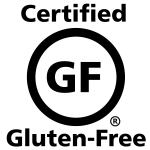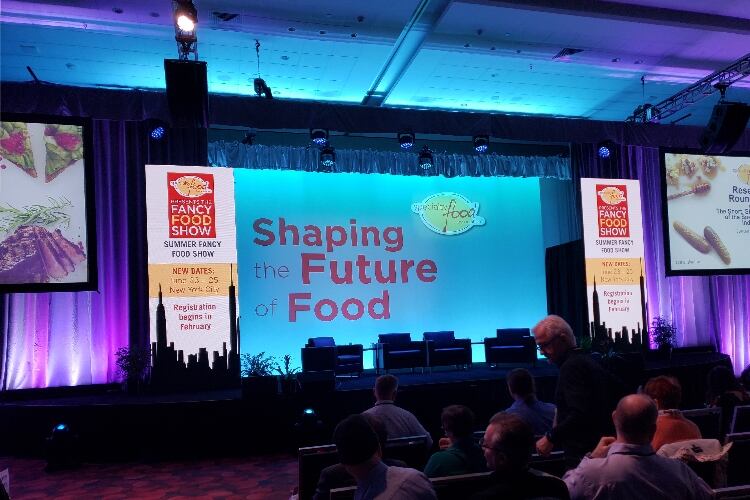The Gluten Intolerance Group (GIG) has operated its Gluten-Free Certification Organization (GFCO) program for CPG products since 1974, the largest and fastest-growing standard for gluten-free food in North America.
After the gluten-free trend went mainstream a few years ago, the process of product certification is still going strong. In 2018 GIG certified 2,203 products from 196 brands as gluten-free. In total, more than 52,000 products made by over 2,500 brands in 47 countries have earned the certification worldwide.
GIG began as a family-run organization helmed by dietitian Elaine Hartsook, PhD, RD, who was considered a top international expert in celiac disease. As GIG outlines, "people with gluten-related disorders cannot tolerate the proteins found in foods containing these grains, and eating them can cause serious health problems, including malnourishment, chronic fatigue and damage to the small intestine."
The GFCO program helped those with a gluten intolerance identify safe foods for decades before gluten-free diets hit the mainstream. Yogurt was the first popular category for certification, though beverages are now catching up.
Everything from cheese, tea and tofu have been certified in the last few months, including Big Easy Bucha kombucha, Oatly Oatmilk, Bunny James carrot fries and A’Mond cheddar cheese.
Chris Rich, VP of marketing and development at GIG, said “Consumers today are demanding transparency, accountability and authenticity in food processing, and manufacturers worldwide continue to turn to GFCO’s third-party certification to secure the trust of the gluten-free community. With no cure for celiac disease and gluten intolerance, consumers will continue to demand gluten-free products.”
Channon Quinn, COO and VP of food safety at GIG, says that the organization is also dealing with an uptick in requests to accommodate consumer preference for transparent and clean labels - and this is something that is becoming increasingly important in the beverage category.
Young people now have a tendency to cycle through several diets like gluten-free, paleo, keto and low-sugar: and this influences how they choose their beverages. Being certified gluten-free helps a brand market to this audience.
“Brands want to be able to make a claim and make it safely. They want to jump on that gluten-free bandwagon,” Quinn said.

Benefits may vary
Brands apply for certifications like gluten-free and non-GMO because it’s what the consumer wants to see on their groceries, even with products that may not necessarily need it. There has also been an increase in products marketed toward keto and paleo diets.
“We have turned away companies that do water or something absolutely silly, because those are inherently gluten-free and there’s no benefit to marketing that as gluten-free,” Quinn said.
“There’s a lot more awareness among consumers who have a medical condition, it’s not so much the fad push it was a few years ago. I think the fad is what forced consumers to say, ‘get it certified or I’m not buying it.’”
The certification process is the same across the board regardless of what the product is. GIG has a list of standards that every single manufacturing facility must pass. Then there is an on-site audit to verify the claims, and testing that’s required to be submitted back to GIG on a quarterly basis.
GIG also does its own surveillance testing by purchasing products at retail and analyzing them. It is a similar process to organic, non-GMO, and kosher certifications, and as long as each brand is maintaining the standards, they maintain their gluten-free certification.
A requirement of GFCO is that "all finished products using the GFCO logo contain 10 ppm or less of gluten, a stricter standard than the labeling requirements of the US, Canada, European Union and many other countries."
Gluten-free vs. gluten-removed
While it may seem obvious that a juice, tea or milk product is naturally gluten-free, there is much more confusion when it comes to alcohol. Beer is brewed with gluten-containing grains like rye and barley: and so there is a separate market for gluten-free beer alternatives.
Other alcohol such as liquor and hard cider are gluten-free, but the beer market for those with gluten allergies or sensitivities has produced many options. An important distinction that GIG hopes to educate on is the difference between gluten-free and gluten-removed.
According to Quinn, gluten-free beer is made from a naturally gluten-free base like sorghum or brown rice. Because there is never gluten in the product to begin with, manufacturers and consumers can be certain that it is safe for those with an intolerance.
Gluten-removed beer starts brewing with a rye or barley base, then uses an additive that removes a portion of the protein.
“There’s no way that we can validate that the part of the protein that needs to be removed is actually removed. There’s no test that can test for that,” Quinn said.
She believes it comes down to the debates about distillation; whether the protein is actually gone or if it is partially consumed and it doesn’t get picked up in tests. But the more educated the market, the bigger the push for verified products will be.
A popularity plateau
In a study from 2017, GIG tested the reaction of Celiac blood to gluten-removed beer as opposed to truly gluten-free beer. It found that no blood samples reacted to the gluten-free beer, but about 50% still had a reaction to the gluten-removed beer.
Cynthia Kupper, CEO of GIG, said “The medical and scientific community has not validated or accepted that these low-gluten or gluten-removed beers are safe because available gluten testing methods have not been sufficiently accurate with fermented and hydrolyzed products. That is why we conducted this first-of-its-kind study.”
Quinn doesn’t think the gluten-free market will fall by the wayside, but that an overall plateau is coming. GIG spends a lot of time educating consumers that living gluten-free isn’t always healthy for everyone, and testing out several fad diets won't do the body any favors.
"There’s a lot that you miss out on by not consuming wheat or its derivative. Unless it is medically necessary, it could actually cause you to gain weight or have other health-related issues that you wouldn’t anticipate by cutting that out," she said.


